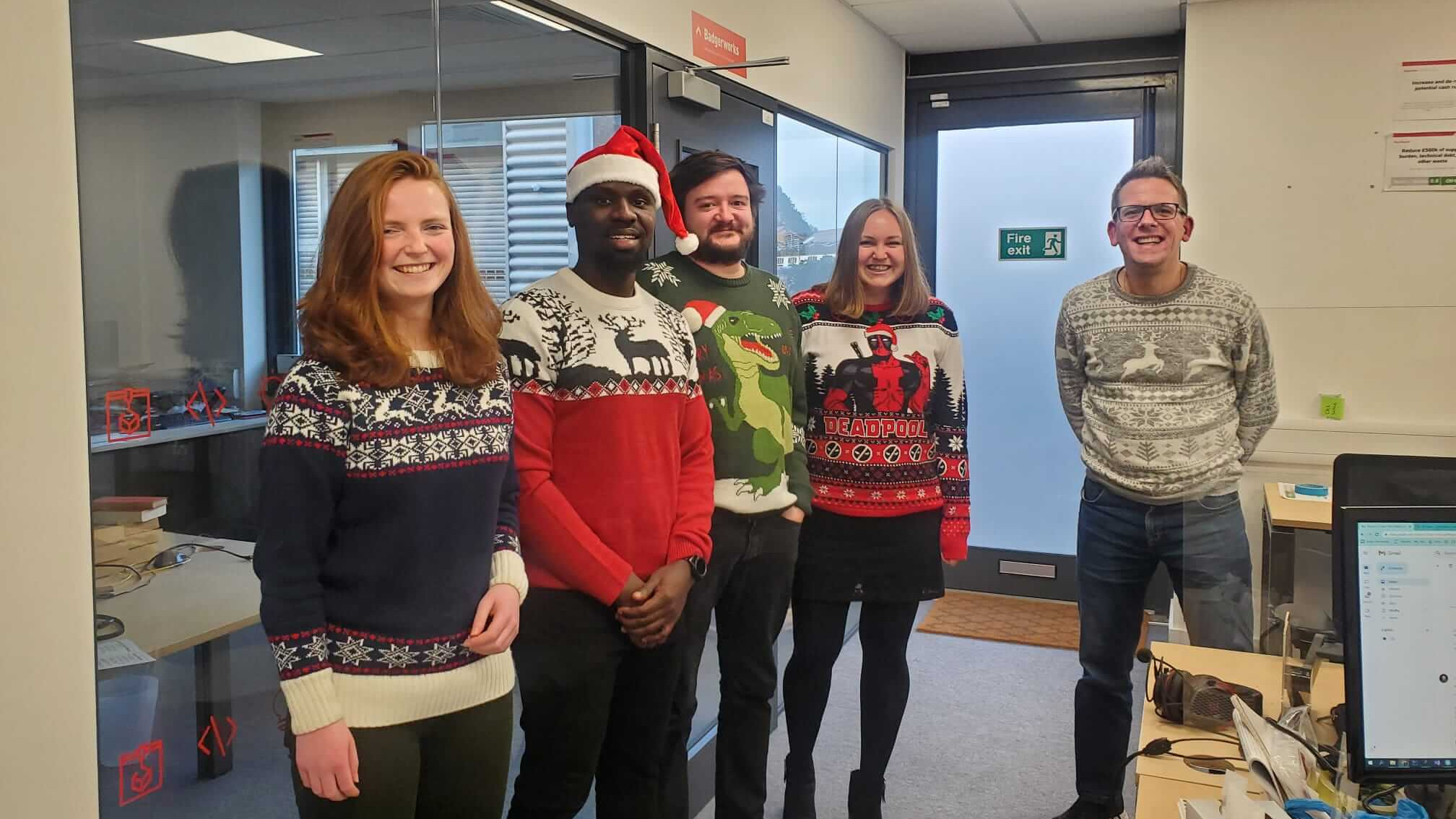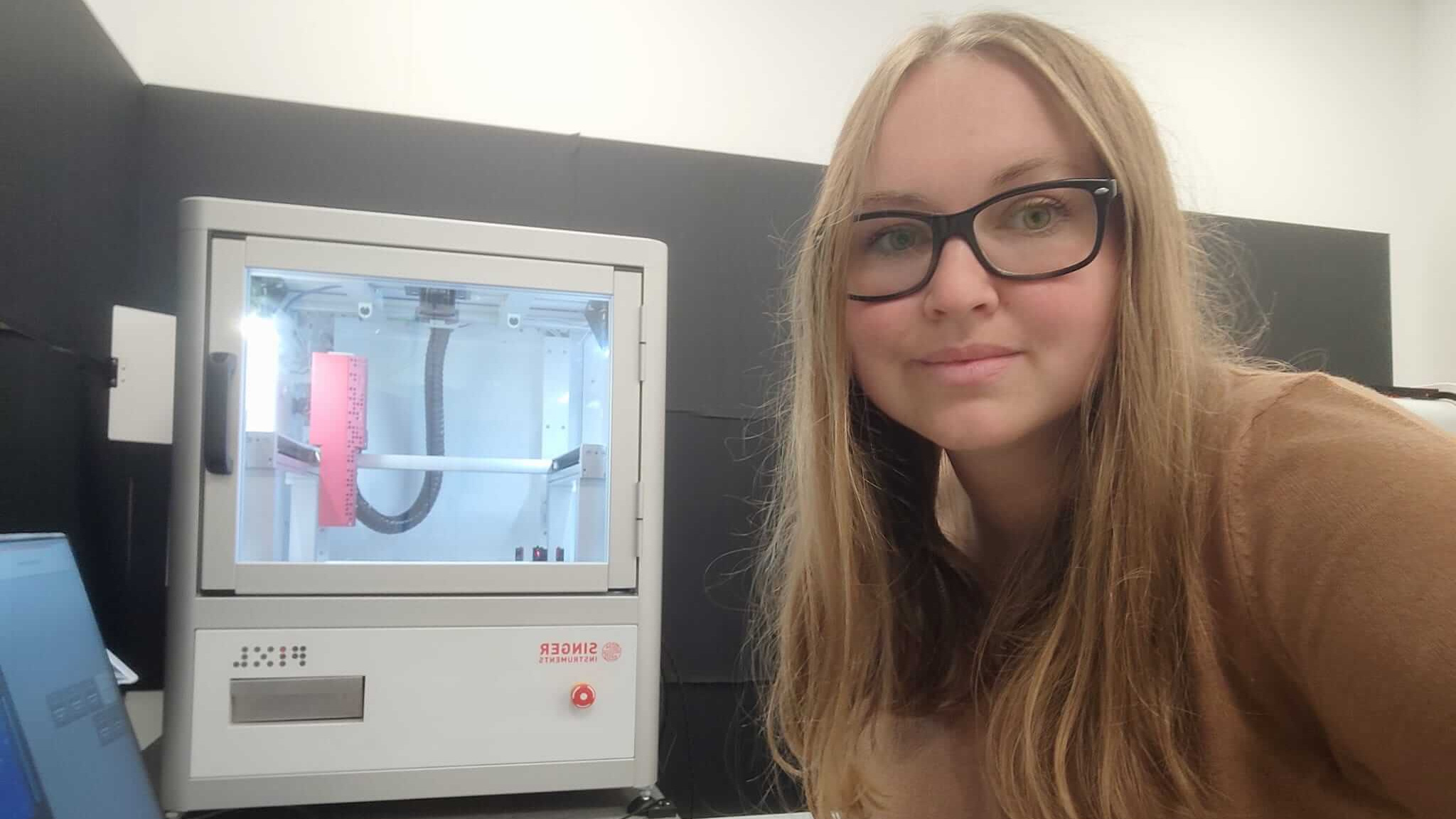My experience at Singer Instruments
In this page I would like to share my incredible journey as a UX designer during my 6-month internship at Singer Instruments. It was an invaluable experience that allowed me to grow both professionally and personally. Here, I will highlight some key aspects of my internship, the projects I worked on, and the skills I developed along the way.
About Singer Instuments
Singer Instruments was established in 1934 and has a long-standing track record in developing and manufacturing mechatronic workstations and laboratory automation robotics. Our world-leading, specialist products are used to facilitate and accelerate genetic and genomic research around the world. We supply public and private research institutions in multiple facets of biological sciences including Genetics, Neuroscience, Systems Biology, Cancer Biology, Biofuel Engineering and microbiology. (Singer Instruments - About Us)
Images taken during my visits at Singer Instruments Lab office in Minehead, Somerset.

This image was generated with DALL-E using the prompt: ‘a representation of a user experience designer in a biotechnological environment running a user testing session to a scientist’.
User experience design and biotechnology
During my tenure as a UX designer intern at Singer Instruments, I had the privilege of working at
the
intersection of user experience design and biotechnology. This unique blend presented
captivating
challenges and fascinating opportunities to create meaningful experiences in the scientific
realm.
Being exposed to this field, I realized how much needs to be done to help scientists in their
day-to-day work and accelerate science. At Singer, I had the chance to work on projects that
directly impacted scientists and observe the need for improvement in their experience while
interacting with biotechnology. I also had the opportunity to work on a start-to-end project
such as
the Central Colony Zone of Inhibition project, which involved designing a user interface journey
for
analyzing inhibition areas in petri dishes with PIXL (Singer Instruments colony picker). This
project showcased the importance of user-centric design in enabling scientists to make informed
decisions and derive valuable insights from their research.
In biotechnology, it is essential to navigate complex technical terminology and jargon specific
to
the field. As a UX designer, I had to bridge the gap between scientists and technology by
translating their requirements and objectives into intuitive design solutions. By empathizing
with
users, conducting thorough user research, and iterating on designs based on feedback, I was able
to
create interfaces that catered to their unique needs and workflows.
Working in biotechnology also presented challenges in terms of data visualization and
simplifying
complex scientific processes. Through iterative prototyping and usability testing, I strove to
distill intricate scientific concepts into user-friendly interfaces that promoted effective data
analysis and interpretation.
Central Colony Zone of Inhibition (ZOI) Project
During my time at Singer Instruments, I had the opportunity to work on the Central Colony
Zone of Inhibition project, a new feature created for the PIXL colony picker. I collaborated
in an Agile environment and delivered valuable insights to stakeholders. I honed my skills
in various software programs such as Adobe XD, Jira, Fibery, and Google Suite. Additionally,
I automated interview transcriptions, conducted heuristic evaluations, created prototypes,
and led user testing and A/B testing sessions. I analyzed questionnaire results and
generated actionable recommendations that were shared with the entire company.
If you want
to know more about this project, please follow
this link
to access the video presentation of
the BETA version of this project. You can also access the main page of this feature on the
Singer Instruments website by following
this other
link
.

Representation of the user flow in the zone of inhibition feature. Source: Singer Instruments
My impact at Singer Instruments
As a UX designer at Singer Instruments, I had the privilege of making a significant impact
during my 6-month internship. By leveraging my skills and expertise, I contributed to improving
the user experience and driving positive outcomes for the company.
One area where my impact was particularly felt was the Zone of Inhibition project. Through my
involvement, I played a crucial role in enhancing the service and integrating it with PIXL
technology. By conducting heuristic evaluations, leading user testing sessions, and analyzing
user feedback, I identified pain points and provided actionable recommendations that were
implemented to improve the overall user experience. Another notable achievement was the
automation
of interview transcriptions for the User Experience
team using the Whisper speech recognition AI model. This innovation significantly reduced the
time required for transcription, improving efficiency by 50% to 83%. By streamlining this
process, I enabled the UX team to focus more on analysis and insights generation, ultimately
delivering better outcomes for stakeholders. If you need something similar for your team please
get in contact with me, I’m happy to share it with you.
Furthermore, my analysis of the PIXL questionnaire results provided tangible insights that were
shared with the entire company. These insights informed decision-making processes and helped
guide future directions for product improvement. By actively engaging with internal and external
scientists, I was able to understand their needs and translate them into actionable design
solutions.
Overall, my contributions as a UX designer had a direct impact on the company’s goals and
objectives. Through collaboration, research, and a user-centric approach, I drove positive
changes in the user experience, contributing to Singer Instruments’ success in the biotechnology
industry.
Other Achivements
-
Extension of my internship
I started this position with a 3-month contract and due to my impact on the User Experience team and the Zone of Inhibition project, I earned an extension of three months on my contract. -
Intern of the year
Every year at the Singer Christmas Party, people are awarded for their work. Last year, due to my impact on my team and within the company, I was awarded the “Intern of the Year” award.


